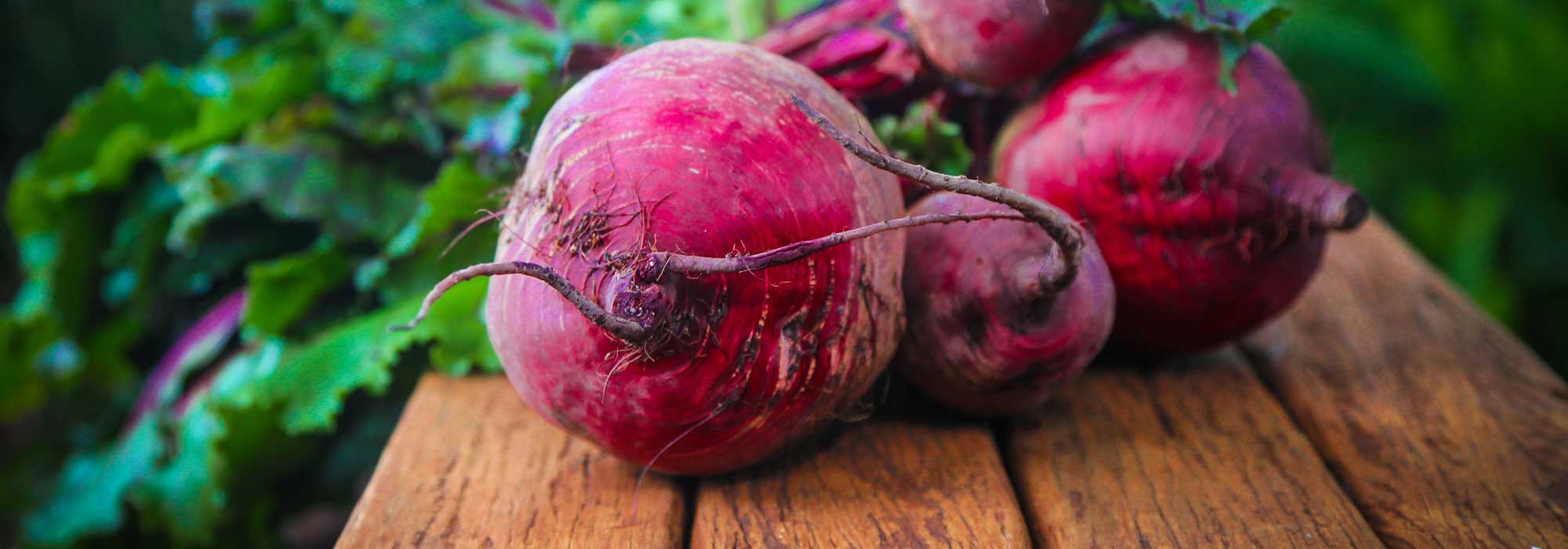
Beetroot: sowing, planting, growing and harvesting
Contents
Beetroot in a nutshell
- Beetroot is a hardy vegetable that enjoys cool, rich soil and full sun exposure.
- There are three main categories: garden beetroots, sugar beets, and fodder beets.
- It is a vegetable that is easy to grow, and sowing requires thinning.
- Beetroot is harvested from May until the end of the year in mild climates, and its young shoots are also edible.
- Its health benefits are well recognised, particularly its very high antioxidant power.
A word from our expert
The Beetroot – Beta vulgaris – is a biennial, hardy root vegetable that is harvested in the first year of cultivation. Its fleshy root can be consumed cooked or raw, and it is rich in slow carbohydrates, renowned for its high content of vitamins, antioxidants, and minerals, making it an excellent weight-loss food. The young green shoots are a delightful addition to mixed salads.
There are three main categories of beetroot: culinary, sugar, and fodder. In this article, we will focus primarily on culinary beetroot, which vary in shape according to the varieties: cylindrical like the famous ‘Crapaudine’, spherical, flattened like the ‘Noire d’Égypte’, but also by their colours (not all beetroot are red; they can also be white, golden yellow like the ‘Burpee’s Golden’, orange, or even pink) and, of course, by their flavours and carbohydrate content. While most beetroot are harvested at ripeness, some can be enjoyed at the juvenile stage, such as the variety ‘Bonel’, ideally consumed as “baby vegetables”.
In the vegetable garden, beetroot prefers to have its head in the sun but its feet in cool soil; it appreciates moisture for optimal growth. The soil should also be rich, particularly in potash, which aids in the proper development of the roots. Sowing, whether early or seasonal, is done in trays or directly in situ in the ground, and it will require thinning as each seed (glomule) sown will produce several beetroot plants. The thinned plants can be replanted. The subsequent cultivation requires standard tasks such as weeding, hoeing, watering, and protecting the soil with organic mulch.
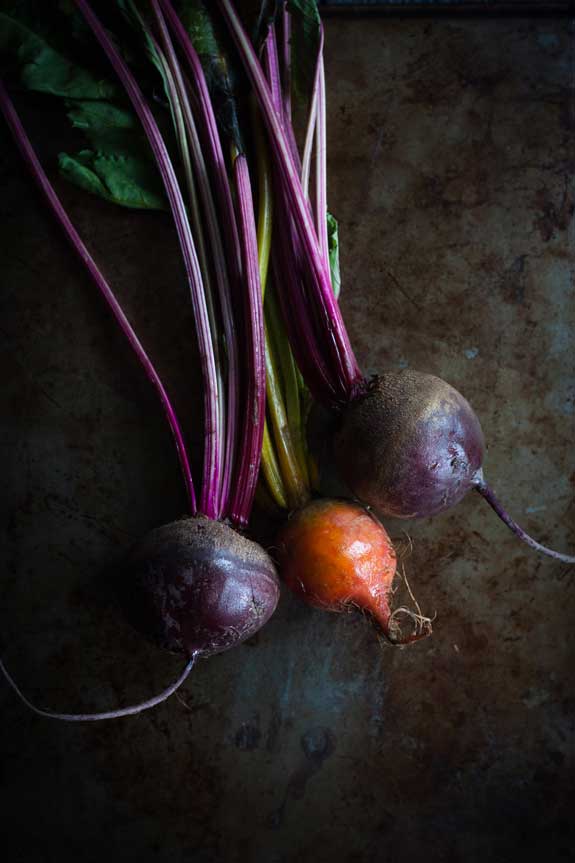
Description and botany
Botanical data
- Latin name Beta vulgaris
- Family Chenopodiaceae
- Common name Beetroot
- Flowering Biennial grown as annual
- Height 6 years
- Exposure Sun
- Soil type Cool and rich
- Hardiness hardy to very hardy
The first selections of beetroots by humans date back to Antiquity, with written records in Greece dating back to 5 centuries before Christ. However, its geographical cradle would be Mesopotamia. It wasn’t until the Middle Ages that descriptions of the varieties of the time reappeared. Forage beets developed in Germany in the 16th century, followed by the first selections of sugar beets in Poland in the 18th century.
Botanically very close to chard, the beetroot was previously written as beet-chard to distinguish the fleshy root of this plant from the stalk of the chard. The genus name, Beta, comes from the Latin bēta (chard, pear) and the species name comes from the Latin, vulgaris (vulgar, common).
We distinguish three subspecies:
- The garden beet, commonly called “Red Beetroot” – Beta vulgaris var. esculenta – cultivated for human consumption.
- The forage beet – Beta vulgaris var. rapa – used to feed animals, especially in winter.
- The sugar beet – Beta vulgaris var. altissima – used to extract sugar and produce bioethanol!
The beetroot is part of the family Chenopodiaceae according to classical classification or the family Amaranthaceae according to phylogenetic classification. The beetroot is a biennial (grown as annual) herbaceous plant. In the first year of cultivation, the beetroot develops its vegetative system: at the beginning of growth, it is mainly the leaves that grow first, arranged in a rosette and emerging from the collar, they are light green, often veined with red and can reach up to 30 cm long. The root develops at soil level, not underground. Its development occurs gradually from the beginning of growth, but it is especially in the last months of cultivation that the beetroot stores its reserves, with the root then swelling rapidly. In the second year, if it has not been harvested, the beetroot produces a flowering stem that can reach 1.5 m high, with green, hermaphrodite flowers grouped in whorls. After fertilization, the seeds are grouped in glomerules. Each glomerule contains up to four seeds, fused together and difficult to separate.
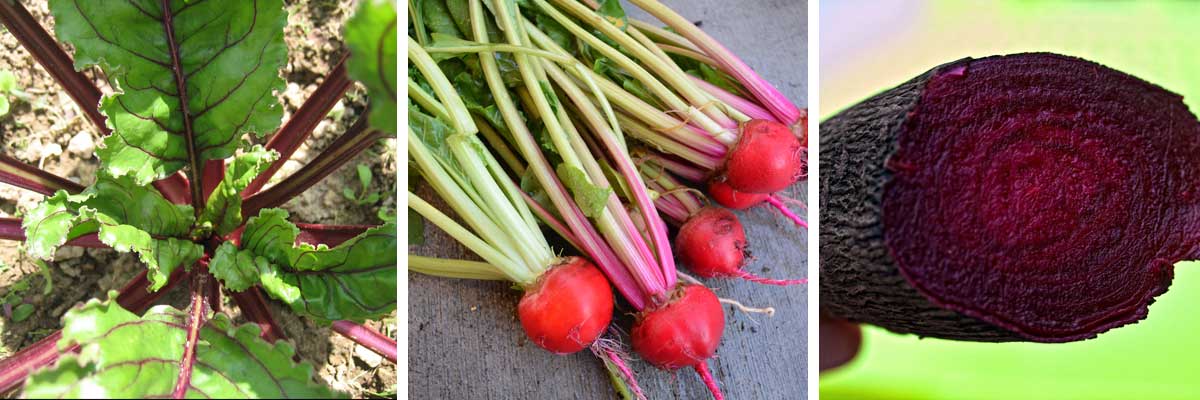
Green leaves veined with red and arranged in a rosette – Leaves emerge from the collar – Cut root of the Crapaudine
Beetroot varieties: red beetroot and other colours
Beetroot varieties differ from their colour, form, and taste. They are here below classified by colour:
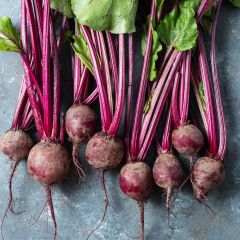
Bonel Red Beetroot - Beta vulgaris
- Flowering time May to July
- Height at maturity 30 cm
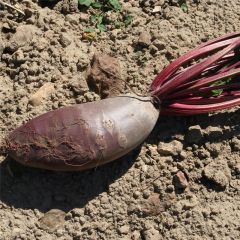
Beetroot Covent Garden - Ferme de Sainte Marthe Seeds
- Flowering time May to July
- Height at maturity 40 cm
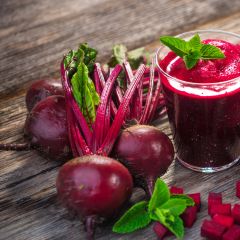
Organic Detroit Improved 2 Bolivar Beetroot - Ferme de Sainte Marthe seeds - Beta vulgaris
- Flowering time May to July
- Height at maturity 40 cm
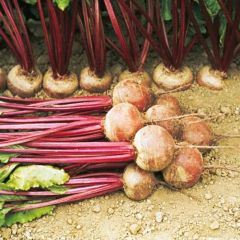
Moneta Red Beetroot - Beta vulgaris
- Flowering time May to July
- Height at maturity 40 cm
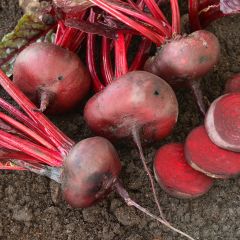
Flat of Egypt Beetroot
- Height at maturity 30 cm
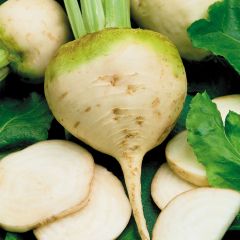
Albina Vereduna White Beetroot - La Ferme de Sainte-Marthe
- Height at maturity 25 cm
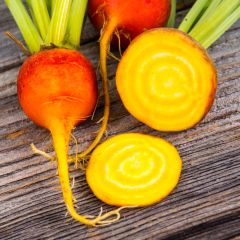
Beetroot Burpees Golden Organic
- Height at maturity 25 cm

Chioggia Beetroot - Ferme de Sainte Marthe seeds
- Flowering time May to July
- Height at maturity 40 cm
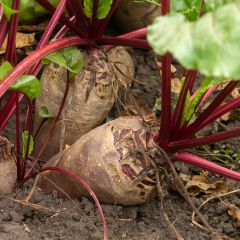
Beet - Beta vulgaris
- Height at maturity 40 cm
Discover other Beetroot seeds
View all →Available in 0 sizes
Available in 1 sizes
Available in 1 sizes
Available in 1 sizes
Available in 1 sizes
Available in 1 sizes
Available in 1 sizes
Available in 1 sizes
Available in 1 sizes
Sowing beetroot and its transplanting
Where and when to sow your beetroot?
Beetroot is generally sown directly in the ground, but for an early crop, it is quite possible to sow in trays:
- For early cultivation, sow from late February to April in trays. Transplanting usually occurs when the first direct sowings take place, which is around April. This method allows for a harvest from May to July.
- For seasonal cultivation, sow from mid-April to July directly in the ground for a harvest from July to October.
How to sow beetroot seeds?
We should refer to them as clumps rather than seeds to be precise. Indeed, except for varieties known as “monogerm” like the ‘Magenta’ beetroot, each clump produces several young plants.
For sowing in trays:
- Fill the tray two-thirds full with potting soil and lightly firm it down with a trowel.
- Place the clumps, leaving at least 3 cm between each clump.
- Cover with a layer of potting soil equal to the thickness of the seeds using a sieve and lightly firm it down with a trowel.
- Water using a water spray.
- When the seedlings reach 10 cm and/or have five leaves, transplant them into the ground, spacing them 20 cm apart, selecting the most vigorous ones.
For direct sowing in the ground:
Beetroot prefers cool, loose soils. Start by loosening the soil with a broad fork and level it with a rake. If necessary, add a bit of ash as beetroot likes potash. (For more information, read: “Wood Ash, How to Use It in the Garden”). Then, if needed, add well-rotted manure or well-decomposed compost into the furrows.
Sowing is done directly in rows:
- Open furrows 1 to 2 cm deep, spaced 25 to 30 cm apart,
- Sow one clump every 5 cm,
- Cover with fine soil and then firm down with the back of the rake,
- Water gently and keep the soil moist until germination!
Once the seedlings reach 10 cm and/or have five leaves, thin them out by selecting the most vigorous ones and ensuring they are spaced 20 cm apart.
Thinning beetroot
From the stage of five leaves, or about 10 cm tall, beetroot must be thinned as each clump will have produced several plants. Water the soil to facilitate thinning and keep only one plant every 20 cm.
The removed plants can be transplanted elsewhere in another plot, but the weaker ones will be composted.
Gwenaëlle provides more information in the tutorial How to Sow Beetroot?
Planting beetroot and its transplanting
Beetroot sown in trays or purchased as plants are transplanted in the garden, in prepared soil just like for sowing, when they have at least 5 leaves.
Transplanting beetroot as bare roots
- Dress the young plants by cutting a third of the leaf and root
- Make a hole using a dibber
- Place your plant and then fill in with soil,
- Water immediately and shade if necessary, as beetroot does not tolerate this transplanting well. Ideally, transplant in the evening or on a cloudy day. Ensure in the following days that the beetroot is establishing well; to do this, water regularly, as they particularly appreciate a regular misting on the leaves.
Planting beetroot as plug plants
Beetroot can also be grown from young plants, as plug plants. These plug plants, at least 2 cm wide at their base, have the advantage of reducing stress during planting compared to transplanting as bare roots, thus the survival rate is often higher.
Here’s how to proceed with their planting:
- A quarter of an hour before planting, place your plug plants in a saucer filled with water, preferably not too cold, to rehydrate them. This step is essential for good plant recovery! A little comfrey manure added to the saucer, about 1/5 of the volume of water, is a good proportion.
- On your prepared bed, mark your lines spaced 25 to 30 cm apart.
- Bury a plug plant every 20 cm. Each plug is buried up to its top edge, there is no need to bury it deeper.
- Water immediately, gently from the spout of the watering can, or with a soft spray from the hose.
- In the following days, ensure the plants are establishing well: the plugs must remain moist while the roots develop in the soil. If the weather is warm and sunny, temporary shading using overturned crates or a shade cloth will be beneficial!
Pairing beetroots in the kitchen garden
Beetroot thrives near lettuce, carrot, parsnip, celery, cabbages, and rocket.
On the other hand, it is better to avoid associating it with spinach, Swiss chard, and orache as they are vegetables from the same family, as well as asparagus, leek, and tomato.
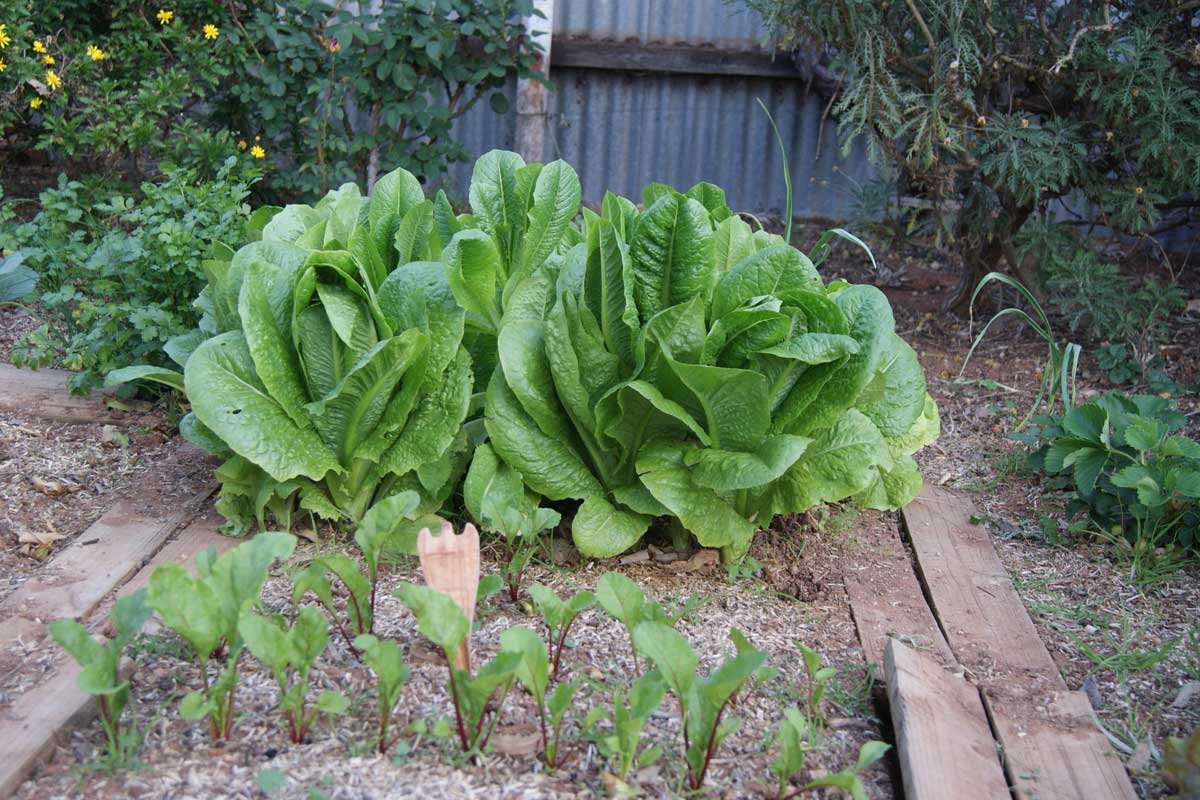
Beetroot and lettuce enjoy each other’s company in the vegetable garden
Growing and care
Care during cultivation
During cultivation, beetroots do not require specific maintenance, apart from regular hoeing and weeding. Water during hot and dry weather to prevent the root from becoming lignified and hard. As beetroots prefer cool soil, consider mulching as soon as possible. Also monitor for the appearance of spots on the leaves (see below for diseases).
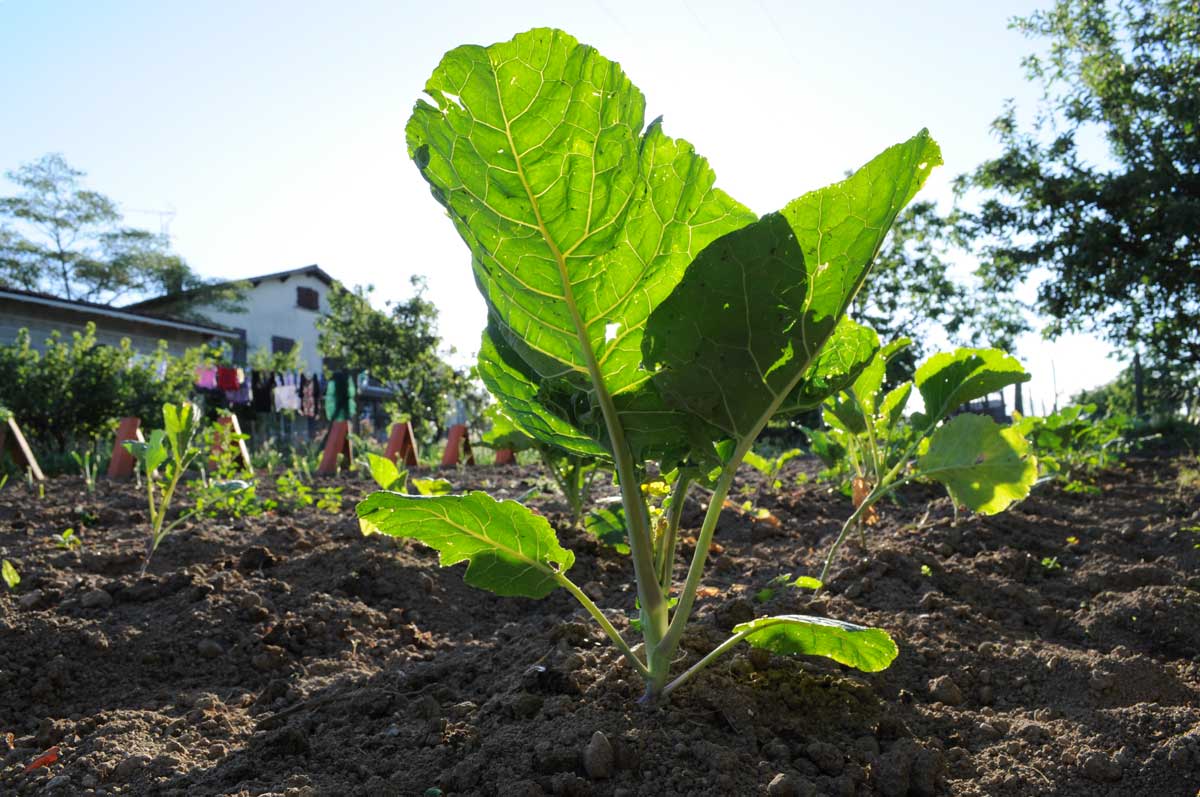
A young plant of beetroot
Diseases and pests of beetroot
At the scale of a family vegetable garden, it is quite rare for beetroots to be affected by diseases or attacked by pests. Nevertheless, the two main problems you might encounter are cercospora and the beet fly.
The Cercospora of Beetroot
Cercospora is a fungal disease caused by Cercospora beticola. This fairly common disease manifests as small round spots on the upper side of the leaves, which are brown to grey in colour and surrounded by a red edge. Heavily affected leaves dry out and die.
Damage can be significant if the disease occurs early, as the roots develop less. However, if this disease appears late in the growing season, it is benign. We still recommend cutting and disposing of the diseased leaves to reduce the risk of spread and infection from this disease. As a preventive measure, water your beetroots at the root directly at the neck of the watering can, avoiding splashing on the leaves.
This disease can be confused with ramulariosis (Ramularia beticola), which has similar symptoms and can cause equivalent or even less significant damage. In the case of ramulariosis, the edge of the necrotic spots is dark brown rather than red.
The Beet Fly
The beet fly, also known as Pegomyia or the beet mining fly, Pegomya betae, is a pest of beetroot whose larvae burrow into the foliage. It is primarily the first generation of larvae, coinciding with the start of the growing season, that can cause the most significant damage and affect the survival of young beet plants. However, this pest is less common in vegetable gardens than in large-scale farming; you simply need to keep an eye out and remove and dispose of any leaves that show signs of tunnelling.
→ Learn more about diseases and pests of beetroot in our advice sheet.
Harvesting and storing beetroots
Early growing allows for harvesting beetroots from May to July, while for seasonal cultivation, harvesting takes place from July to October, and even later in regions with a mild climate.
Some gardeners harvest the young leaves to consume in mixed salads. If you do this, be careful not to exhaust the young plants so that they can still develop their roots.
To store beetroots throughout the winter, it is advisable to keep them in a cool, dark place such as a cellar or pantry. To optimise preservation and best maintain their flavour qualities, you can bury them under a layer of dry sand. In mild climate areas, they can be stored in the ground, simply protected with a mulch.

Beautiful beetroot harvest!
Uses and nutritional benefits of Beetroot
Beetroot is most often consumed cooked, but it is also edible raw. It is worth noting that it provides the most antioxidants when cooked. There is no shortage of recipe ideas, and it is often featured in gourmet dishes. It can be simply cooked and cut into pieces, blended with fresh goat cheese, made into soup with Russian borscht, or grated to add colour to salads… The young leaves are also excellent in a mesclun.
Beetroot is a vegetable that mainly contains slow carbohydrates, along with fibre and protein. It is rich in various vitamins, particularly B9, which aids in proper cell renewal and the healthy development of the fetus in pregnant women. The antioxidant power of beetroot is very high; antioxidants such as lutein, zeaxanthin, betalains, and flavonoids are compounds that protect the body from aging, cardiovascular diseases, and reduce the risk of cancers. It has been scientifically proven that betalain (betaine), a pigment, reduces the risk of skin, liver, and lung cancers in animals. This same molecule is responsible for colouring urine red. Beet leaves are also rich in flavonoids (antioxidants), so the young shoots are welcome in salads!
 Multiple uses of beetroot
Multiple uses of beetroot
Making beetroot seeds
The first year of cultivation is similar to that for consumption, but it is unnecessary to sow too early, summer sowings are best for seed production. In autumn, in very cold climates, the roots are dug up and stored, then replanted in March. If the climate is milder, they are left in the ground and covered with leaves to overwinter. Beetroots are selected based on the characteristics of the species. Diseased roots and those attacked by insects are discarded.
As pollination occurs by wind, it is strongly recommended to produce seeds from only one variety per year, as cross-breeding would be inevitable with two varieties. Also, be sure not to allow chard to go to seed in the same year, as they can also cross with beetroot. Flowering spikes appear in spring of the second year, and it is preferable to stake the plants to prevent them from falling over. In August, the glomerules become mature and the spikes are harvested once they are thoroughly dry. The glomerules must then be separated from the stems and passed through a coarse mesh sieve to facilitate the operation.
Useful resources
Discover our range of beetroot: available as seeds and plug plants.
Our advice sheets: Beetroot, the best varieties and Choosing a beetroot
Pascale explains how to make vegetable chips
Advice sheet: Forage plants, 5 vegetables for animals
Frequently asked questions
-
Why aren't my red beetroots shooting?
Red beetroot that germinates but does not grow can have several possible causes, sometimes in combination:
- Have they been thinned? Just like carrots, if the beetroot is too crowded, they will not grow properly. - Are they well-watered? Beetroot loves water and a cool soil. Also, consider mulching in summer to retain moisture in the soil. - Another possible cause is the fertility of the soil; if the surrounding vegetables are weak, it may be that your soil lacks organic matter. Add compost and water your vegetables with diluted nettle manure at a ratio of one part manure to five parts water.
- Subscribe!
- Contents































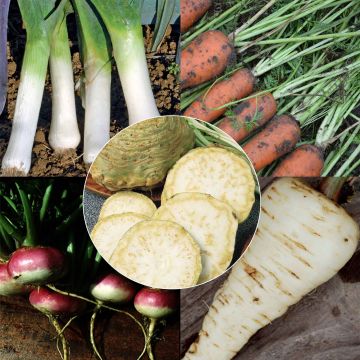
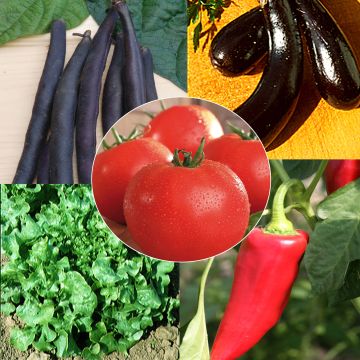
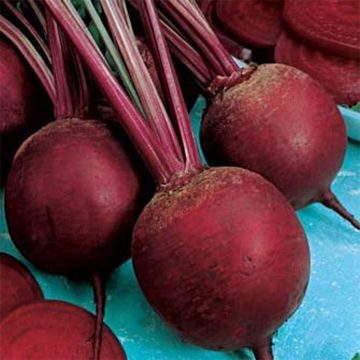
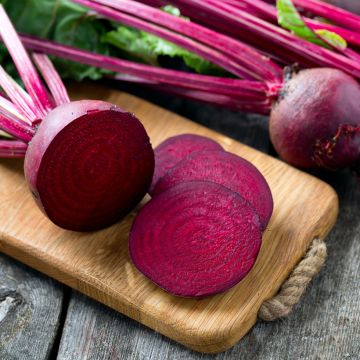
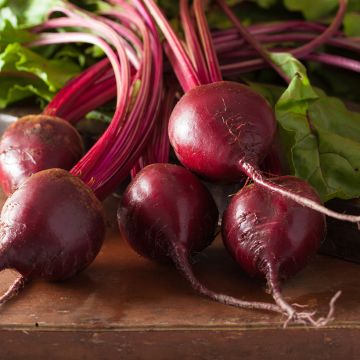

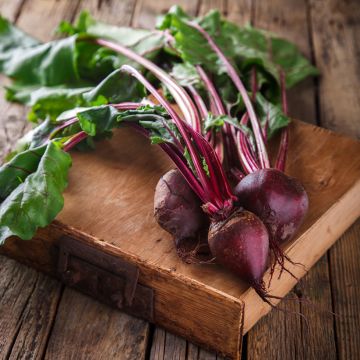

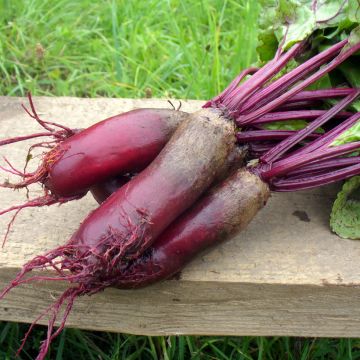
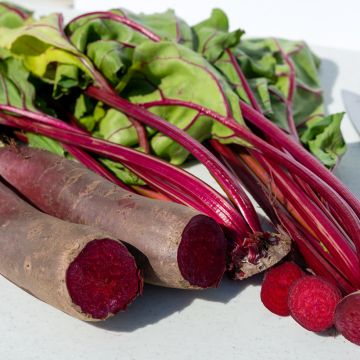
Comments